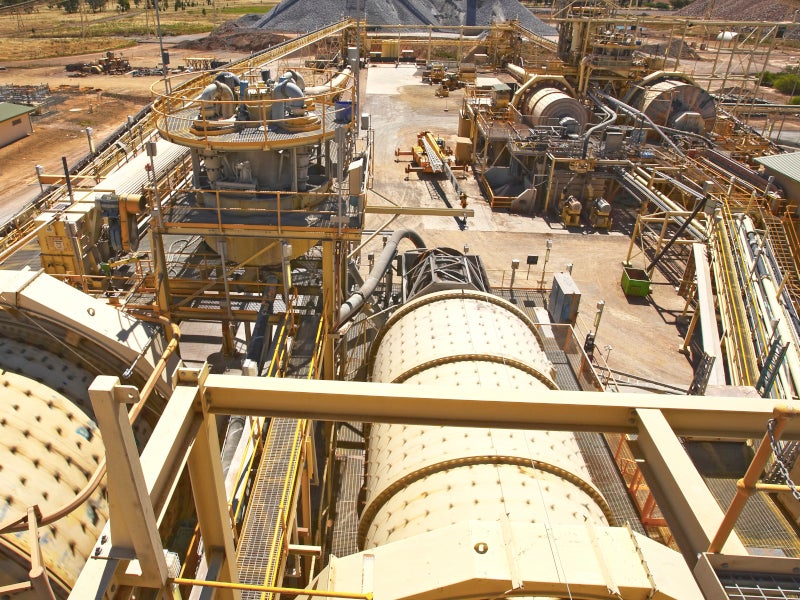The Castelo de Sonhos gold project, situated in Para, Brazil, is an open-pit mining development owned by TriStar Gold.
The pre-feasibility study for the project was concluded in October 2021, while the environmental impact assessment (EIA) report was finalised in July 2022.
The mine will be developed in two stages. The initial six years will concentrate on the Esperança South deposit, which is higher in grade, while the subsequent five years will target the Esperança East and Center deposits.
The project’s estimated capital expenditure is $261m. The final exploration report is due in 2024, with the preliminary licence expected in the first quarter of 2024.
Location of the Castelo de Sonhos project
The project is located 20km north-east of Castelo de Sonhos town, near the BR-163 highway connecting Cuiaba, a significant commercial city, and Santarem, a key port city on the Tapajos River in Brazil.
The gold deposit is located on a plateau 350m above the cattle-grazing plains in southern Para.
Geology and mineralisation of the Castelo de Sonhos project
Geologically, the Castelo dos Sonhos formation comprises slightly metamorphosed sandstones and conglomerates, forming a plateau on the Amazonian Craton, at the juncture of the Tapajos and Iriri-Xingu tectonic domains.
Gold mineralisation predominantly occurs within a central band of conglomerate lithologies, flanked by arenites at both the base and top.
The central conglomeratic band has a thickness from 250m to 300m, while the upper and lower arenites exceed 500m in thickness.
Gold reserves
The probable reserve at Castelo de Sonhos gold mine is estimated to be 38.7 million tonnes (mt), grading 1.1g/t of gold with a metal content of 1.4 million ounces (moz) as of October 2021.
Mining method of the Castelo de Sonhos project
The Castelo de Sonhos project will be developed using conventional open-pit mining methods of drilling, blasting, loading, and hauling.
The mining operations are projected to last for 11 years, with phase one (Esperança South) covering the first six years, followed by phase two (Esperança East and Esperança Center) for the subsequent five years.
The expected annual ore production rate is 3.6mt, with a life-of-mine strip ratio of 9:1. Mining will be conducted in 20m benches with a berm width of 10m.
The mining fleet will comprise 4.5m³ hydraulic excavators, front-end loaders, and 42t haul trucks, along with the necessary ancillary equipment.
Additionally, there is potential for underground mining to extract deep resources that may be located more than 150m below the surface. The current focus is, however, on surface mining and no resource has been estimated below 150m.
Ore processing at Castelo de Sonhos
The ore processing facility will be strategically situated adjacent to the Esperança South pit, close to the deposit’s centre.
The run-of-mine (ROM) ore will either be accumulated for blending purposes or directly deposited via a grizzly into the primary dump hopper. A sonic fogger system will be installed above the hopper to mitigate dust, and a rock pick will manage any oversized material.
The undersize from the hopper will directly bypass the primary crusher while the oversize will be processed by the primary jaw crusher. The resulting material, combined with the grizzly undersize, will then be transported to a large, open coarse ore stockpile.
From this stockpile, ore will be reclaimed and fed into the grinding circuit, which comprises a semi-autogenous (SAG) mill and a ball mill, both operating in closed circuits with cyclones. The SAG mill will also receive lime and sodium cyanide additions for processing.
The cyclone overflow slurry, with a P80 of 105 microns, will pass through vibrating trash screens before entering a series of cyanidation/carbon-in-leach (CIL) tanks. Air and sodium cyanide will be introduced in the leaching process, with activated carbon present in the latter tanks to absorb the gold.
The gold-laden carbon will be extracted and processed through acid washing and elution, followed by thermal regeneration in a rotary kiln. Finally, gold will be recovered from the eluate using electrowinning cells, with the resulting metal smelted into dore bars ready for shipping to refining facilities.
Site infrastructure
The project site is accessible from the town of Castelo de Sonhos, located on Brazilian Federal Highway 163. The main access road to the site will be enhanced by 2km from its current state. A new 15.6km road will be constructed to link the existing road to the processing facility.
Other roads are being planned to improve the internal connectivity of the mine and processing areas, including a 12m-wide mine haulage access road, a 2.6km-long makeup water access road, and a 5.6km-long pipeline access road from the metallurgical plant to the dam.
The site currently has two airstrips, one measuring 550m x 30m and the other 500m x 20m.
The projected electrical power requirement for the project is 15MW. Power is expected to be received from the Castelo de Sonhos substation via a 138kV exit bay. A 27km, 138kV transmission line with a single circuit conductor cable will connect to a substation at the project site, equipped with a 138-13.8kV transformer.
Potable water will be sourced from wells to support the plant.
The existing camp at the project site can accommodate 40 individuals and will be expanded during the construction period to accommodate the owner’s team. Accommodation for on-site contractors will be self-procured.
Contractors involved
The pre-feasibility study (PFS) for the project was prepared by GE21 Consultoria Mineral, a consultancy specialising in mineral projects.
Piteau Associates UK, experts in water management, conducted the project-wide water management study while Itaaçu performed the geotechnical studies.
CSA Global, a leading mining consulting group, was responsible for updating the mineral resource estimate for the Castelo de Sonhos gold project.






